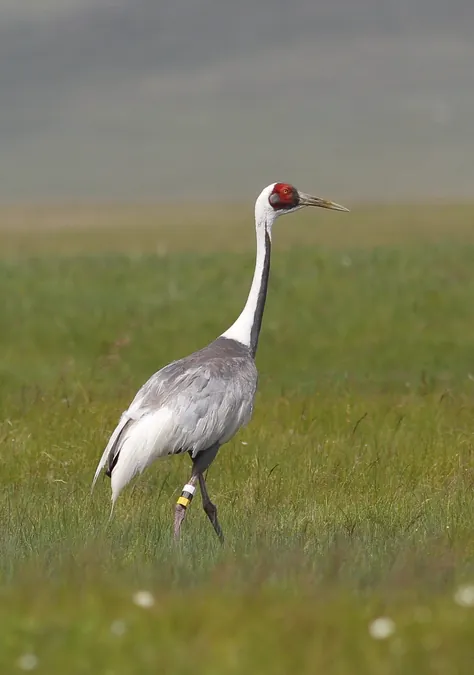
Cranes in Crisis: How Their Migrations Are Shaped by a Changing World
2024-09-23
Author: Wei Ling
A groundbreaking study has uncovered the intricate relationships between cranes and their environments, providing critical insights as we grapple with the effects of global climate change on wildlife. This global collaborative research, involving scientists from ten countries and featuring state-of-the-art animal tracking technology, illuminates how four crane species adapt their migrations to ever-changing and unpredictable conditions.
Led by researchers from the Max Planck Institute of Animal Behavior and Yale University, the study, published in the Proceedings of the National Academy of Sciences on September 23, demonstrates the remarkable lengths these birds go to for survival. By employing innovative solar-powered GPS tracking devices, the team monitored the movements of 104 cranes across Africa, Asia, and Europe, revealing astonishing migratory journeys that often exceed 6,400 kilometers round trip. These epic migrations involve overcoming formidable barriers like the Alps, Himalayas, and vast deserts.
The five-year research project not only tracked the cranes’ movements but also developed a statistical framework linking their migration patterns to environmental variables, such as proximity to food sources and water bodies, temperature variations, and vegetation cover. According to Scott Yanco, a postdoctoral researcher at the University of Michigan and lead author of the study, "Animals have to satisfy their own needs with what they can get from their environment, but both of these are changing constantly." This shifting landscape leads to complex optimization challenges for cranes as they migrate.
Remarkably, the study revealed that each crane species experiences vastly different environmental conditions throughout the year, timed with key phases in their life cycles. For instance, demoiselle cranes face extreme temperature changes while traversing the Tibetan plateau. “We suspect this all has to do with different biological needs during these different times of the year,” emphasizes Yanco.
Common cranes distinctly favor agricultural areas in late summer—critical for raising their young and preparing for the fall migration—and this preference surfaces when food accessibility is paramount. Conversely, black-necked cranes are caught in a dilemma: deciding between safe resting places and abundant food supplies. The researchers discovered that the birds adjust their priorities throughout the year; opting for safety during migration and prioritizing food during breeding periods.
“We were astonished by how adeptly cranes navigated trade-offs between competing needs to access vital environments at the right times,” reflects Ivan Pokrovsky, the study’s last author and a postdoctoral researcher at MPI-AB. This adaptability not only showcases the resilience of these beautiful birds but also emphasizes the urgent need for effective conservation strategies.
The implications of this research extend far beyond cranes. Understanding the dependent relationships between species and their environments is essential as climate change and biodiversity loss pose grave threats to wildlife globally. As climate patterns continue to shift, the knowledge gained from this study can serve as a critical tool for wildlife conservation management and policy development.
As we delve deeper into these complex predator-prey dynamics and environmental influences, it's clear that the fate of cranes—and many other species—hinges on our ability to recognize and respond to the dramatic changes occurring in their habitats. This study is not just an academic exercise; it is a call to action for conservation initiatives aimed at preserving not only cranes but the intricate ecosystems they inhabit.




 Brasil (PT)
Brasil (PT)
 Canada (EN)
Canada (EN)
 Chile (ES)
Chile (ES)
 Česko (CS)
Česko (CS)
 대한민국 (KO)
대한민국 (KO)
 España (ES)
España (ES)
 France (FR)
France (FR)
 Hong Kong (EN)
Hong Kong (EN)
 Italia (IT)
Italia (IT)
 日本 (JA)
日本 (JA)
 Magyarország (HU)
Magyarország (HU)
 Norge (NO)
Norge (NO)
 Polska (PL)
Polska (PL)
 Schweiz (DE)
Schweiz (DE)
 Singapore (EN)
Singapore (EN)
 Sverige (SV)
Sverige (SV)
 Suomi (FI)
Suomi (FI)
 Türkiye (TR)
Türkiye (TR)
 الإمارات العربية المتحدة (AR)
الإمارات العربية المتحدة (AR)